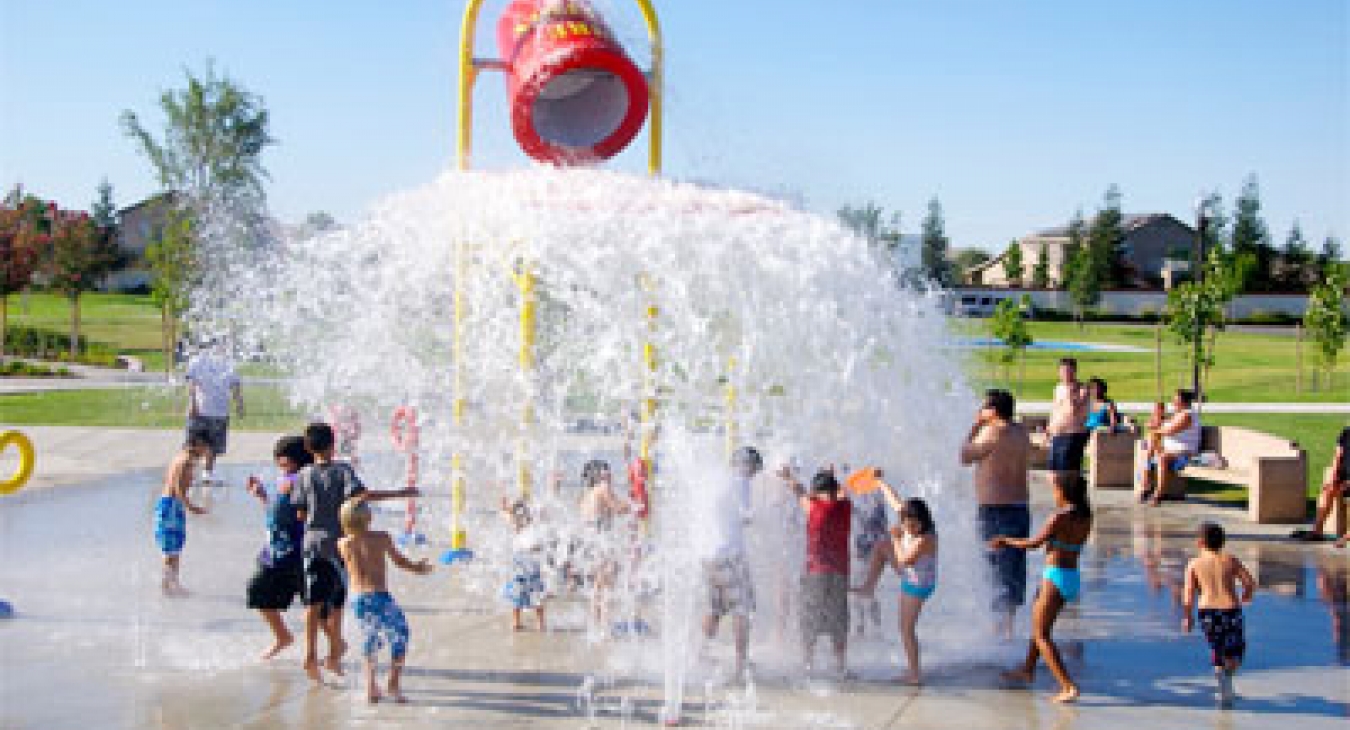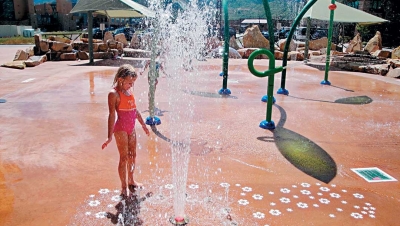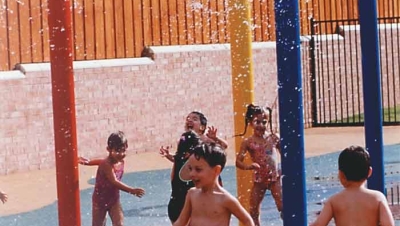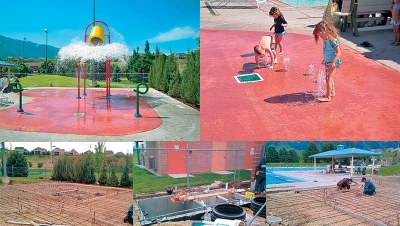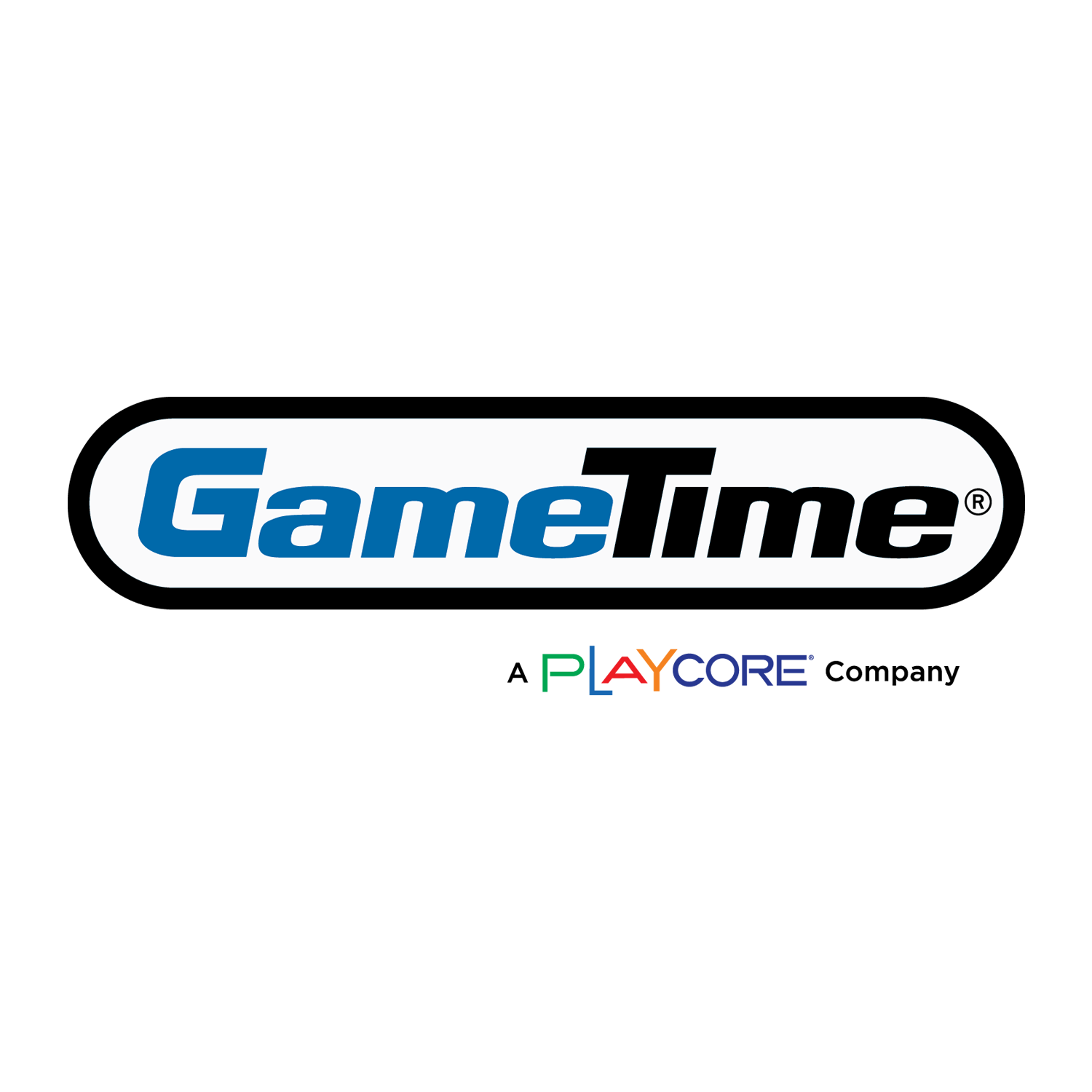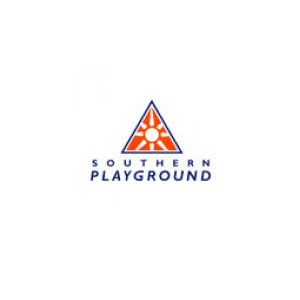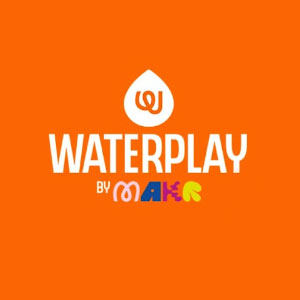Spray Parks
With Special Guest Nancy White Ph.D.
What could be more perfect for a child in hot weather than running around while water sprays, splashes, trickles and mists around you? What could be more perfect for the parent of that child than watching your child play in and around water without fear of drowning or severe injuries? Spray parks, also known as splashpads, are a relatively new phenomenon in public parks and recreation. These facilities are popular with industry professionals due to the fact that splashpads are considerably less expensive than pools to build and operate, do not require lifeguards, present a lower level of risk than pools, are accessible to everyone, and appeal to people of all ages.
A spray park is basically an aquatic facility with no standing water. Water shoots through the air or sprinkles down from a series of interesting looking elements. Regulations for this type of facility are relatively new, with the first guidelines and standards being implemented around 2003. Regulations vary by state and local area.
An area free of slip, trip, and fall hazards is necessary to maintain safety. The surfacing needs to be non-slip, free of obstructions and resistant to chlorine and heavy usage. A continuous clear deck surrounding the splash zone of 4 feet wide is a requirement in many local and state standards. The facility should be designed with a gently sloped splash zone so water from the features flows back into a reservoir. Some facilities are designed to use potable water systems where water flows through the splashpad features and then out either to be repurposed for irrigation or back to sewage. This water is not treated or recirculated back to the spray park.
Due to concerns about water quality and recreational water illnesses, many operators have moved to use of recirculated water which is disinfected, sanitized, and treated before it is reintroduced through the water features. A recirculation pump capable of turning the water over every 30 minutes is a requirement in some local areas. A validated ultraviolet light disinfection system is used by many spray park operators as a second line of defense against the spread of recreational water illnesses like cryptosporidium. Potable water sources need to be used for foggers and features producing fine mist.
Environmental Health Departments in various areas have different requirements for splashpads. It is important for spray park operators to learn the requirements for their local area so steps can be taken to comply with applicable regulations or guidelines. In some areas, emergency shut off switches, showers and toilet facilities with diaper changing stations, and recirculation systems with UV light are required. Anti-entrapment drain covers are also an important consideration.
There are also regulations about ground level spray nozzles including requirements that the nozzles are clearly visible, flush with the surface, and which restrict the size of the nozzle. These regulations are designed to prevent tripping and falling injuries, as well as preventing the possibility of fingers and toes getting stuck in the nozzles. The velocity of the water moving from ground level elements should be restricted to avoid injuries to users, for instance a child sticking the nozzle in their ear, nose, or eye.
Signage is also an important part of risk management for a splashpad. Regulations often specify the size of lettering and wording for signs. One common requirement for splashpad signs is a sign stating that the water is recirculated, do not drink. In 2010, after a local lake tested high for bacteria, the City of Dallas Texas created a public awareness program about the possibility of bacteria in their spray parks. Another good sign warns that surfaces may be hot and that the play area should be inspected by parents or guardians prior to use. Signs stating that footwear is recommended, and that children under 12 should be supervised at all times by an adult, are beneficial as well.
Rules for the splashpad should be posted for users. The rules should restrict running, smoking, food/beverages, and glass around the spray park. Swim diapers may be required for children under 3-4 years of age. Diapers should not be changed or disposed of in the spray park area. A rule about clearing the area is case of thunder, lightning, or inclement weather should also be posted. Individuals with open sores, who are sick, or have diarrhea should not enter the spray park area. The City of Orangeburg South Carolina posts their rules on their internet site.
Operators can ensure a safe and sanitary water play area by learning about their local/state regulations or guidelines, and providing splashpads that are well-designed and regularly maintained. Although these facilities are often not supervised or fenced, they still require consistent regular care and attention from trained personnel. Providing showers and toilets nearby can be also be very helpful in maintaining a sanitary and safe spray park.
Additional information you may wish to review: ASTM F2699 - 08(2013) Standard Guide for Fences for Commercial and Public Outdoor Water Spray/Play Areas
http://www.astm.org/Standards/F2699.htm
For even more information you should also review the National Swimming Pool Foundation website at: http://www.nspf.org/en/Home.aspx and review State and County Codes at: http://www.nspf.org/en/Resources/News_StateCodes.aspx


